Direct Carbon (Fresson) Object View
Support
Direct carbon prints have a paper support that can be in a variety of textures. Papers tend to be smooth or very slightly rough and be a moderate to heavy weight as they had to be able to withstand repeated washing with an abrasive (sawdust). Fresson printing paper was commercially available in Europe from 1900 until WWII and in America from 1927 to 1939. The paper was sold pre-coated, and unsensitized.
Direct carbon prints have a paper support that can be in a variety of textures. Papers tend to be smooth or very slightly rough and be a moderate to heavy weight as they had to be able to withstand repeated washing with an abrasive (sawdust). Fresson printing paper was commercially available in Europe from 1900 until WWII and in America from 1927 to 1939. The paper was sold pre-coated, and unsensitized.
What to look for: Paper support made of high quality, moderate to heavy weight.
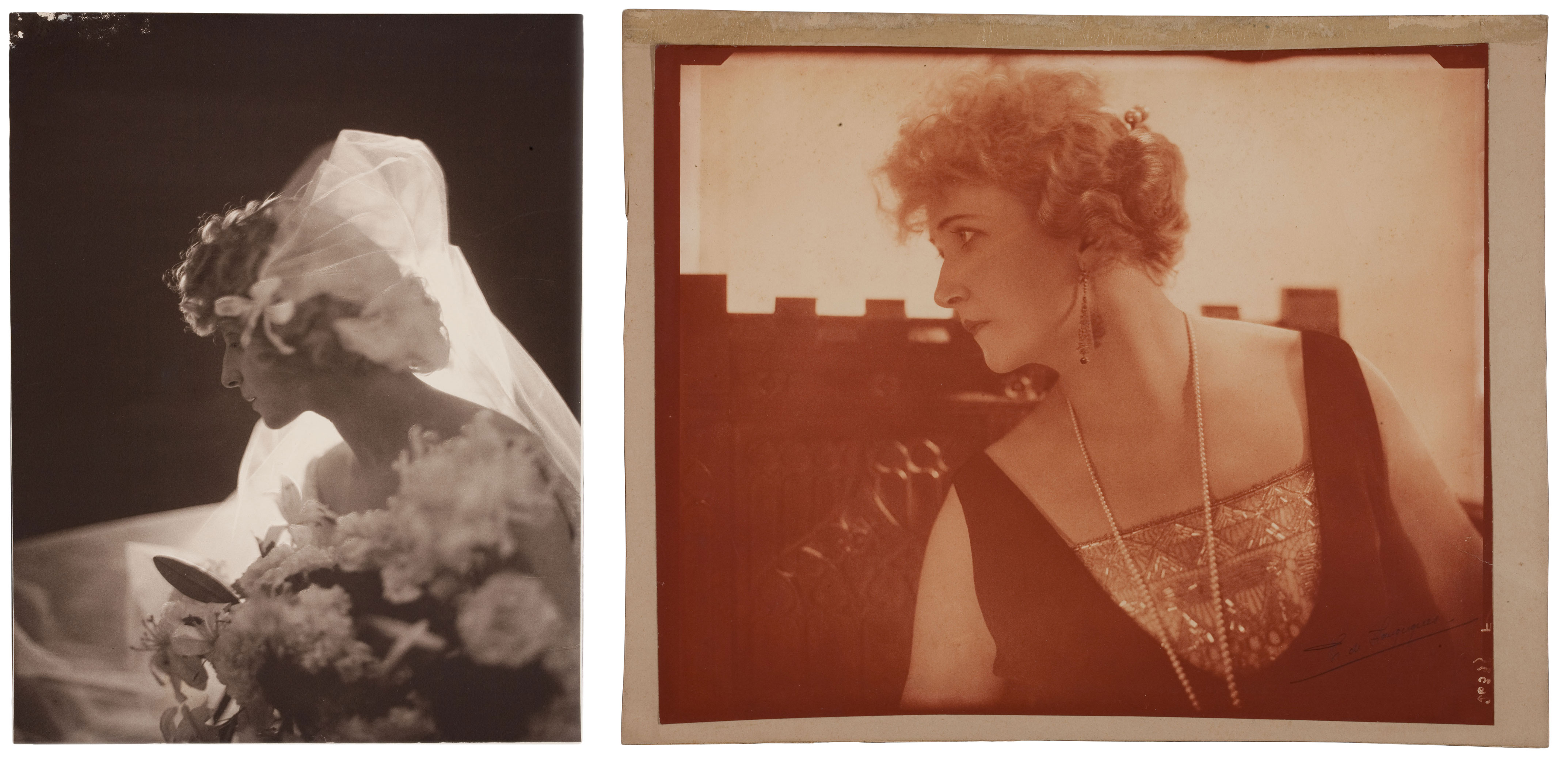
Direct carbon prints are on a moderate to heavy weight paper support.
Image: Color/Tone, Quality
Fresson papers were commercially available in a variety of different colors. One source indicated eight or nine colors while another said twenty different colors consisting of ten monochrome colors each with two intensities. Black was likely the most common color. Direct carbon prints consist of pigment suspended in a colloid (probably gelatin) and therefore will have no image fading. Direct carbon prints have a distinct reticulation pattern visible at the microscopic view which translates into a grainy appearance at the object view. The graininess of the print could be controlled during development. The print was placed on a metal plate at an angle and a slurry of sawdust and water was repeatedly poured over the surface, which gradually eroded the soluble portions of the pigmented colloid. To achieve a coarser texture, the photographer could tilt the print at a steeper angle or thicken the sawdust slurry. Also, the shadows have a distinctive velvety quality.
Fresson papers were commercially available in a variety of different colors. One source indicated eight or nine colors while another said twenty different colors consisting of ten monochrome colors each with two intensities. Black was likely the most common color. Direct carbon prints consist of pigment suspended in a colloid (probably gelatin) and therefore will have no image fading. Direct carbon prints have a distinct reticulation pattern visible at the microscopic view which translates into a grainy appearance at the object view. The graininess of the print could be controlled during development. The print was placed on a metal plate at an angle and a slurry of sawdust and water was repeatedly poured over the surface, which gradually eroded the soluble portions of the pigmented colloid. To achieve a coarser texture, the photographer could tilt the print at a steeper angle or thicken the sawdust slurry. Also, the shadows have a distinctive velvety quality.
What to look for: A coarse or grainy image with no fading and velvety shadows. The image can be in a variety of colors.
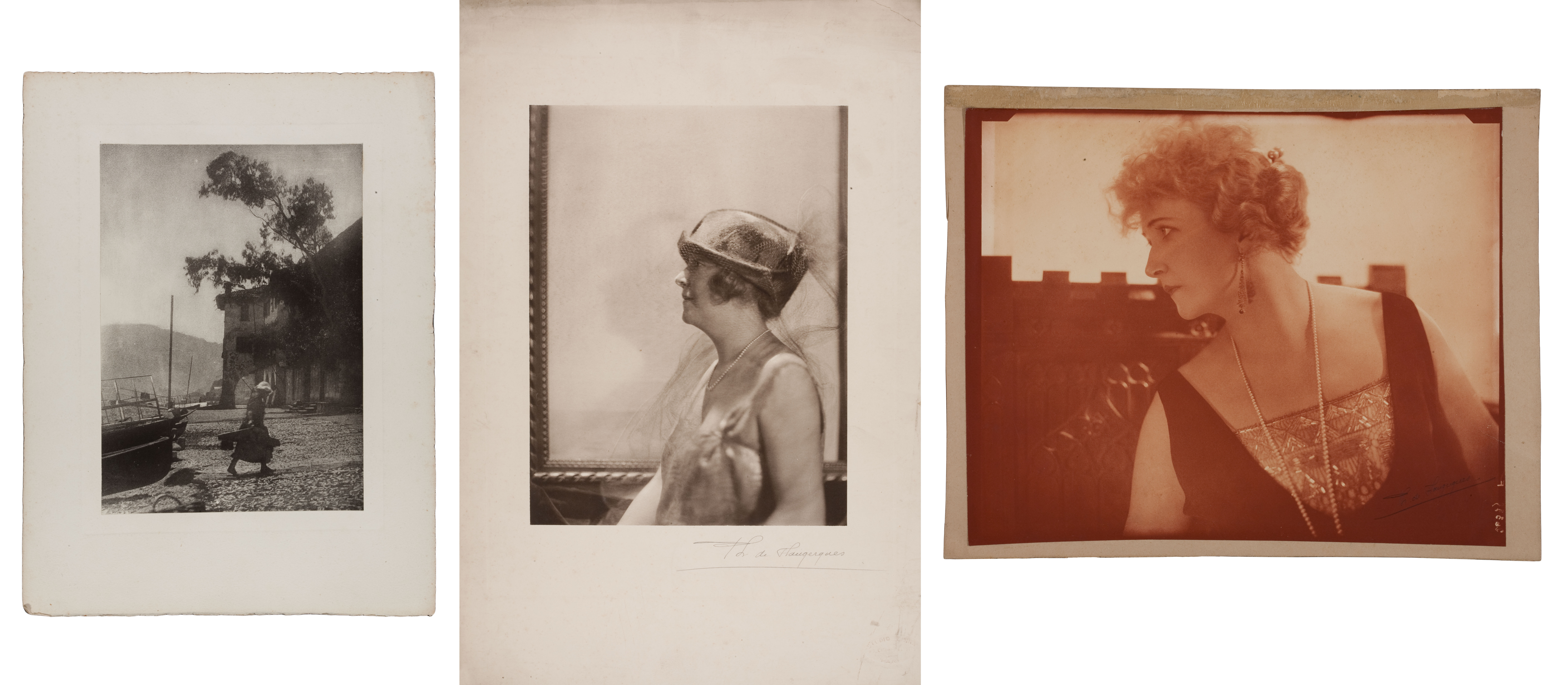
Black was the most common color, however papers came in a wide variety of colors.
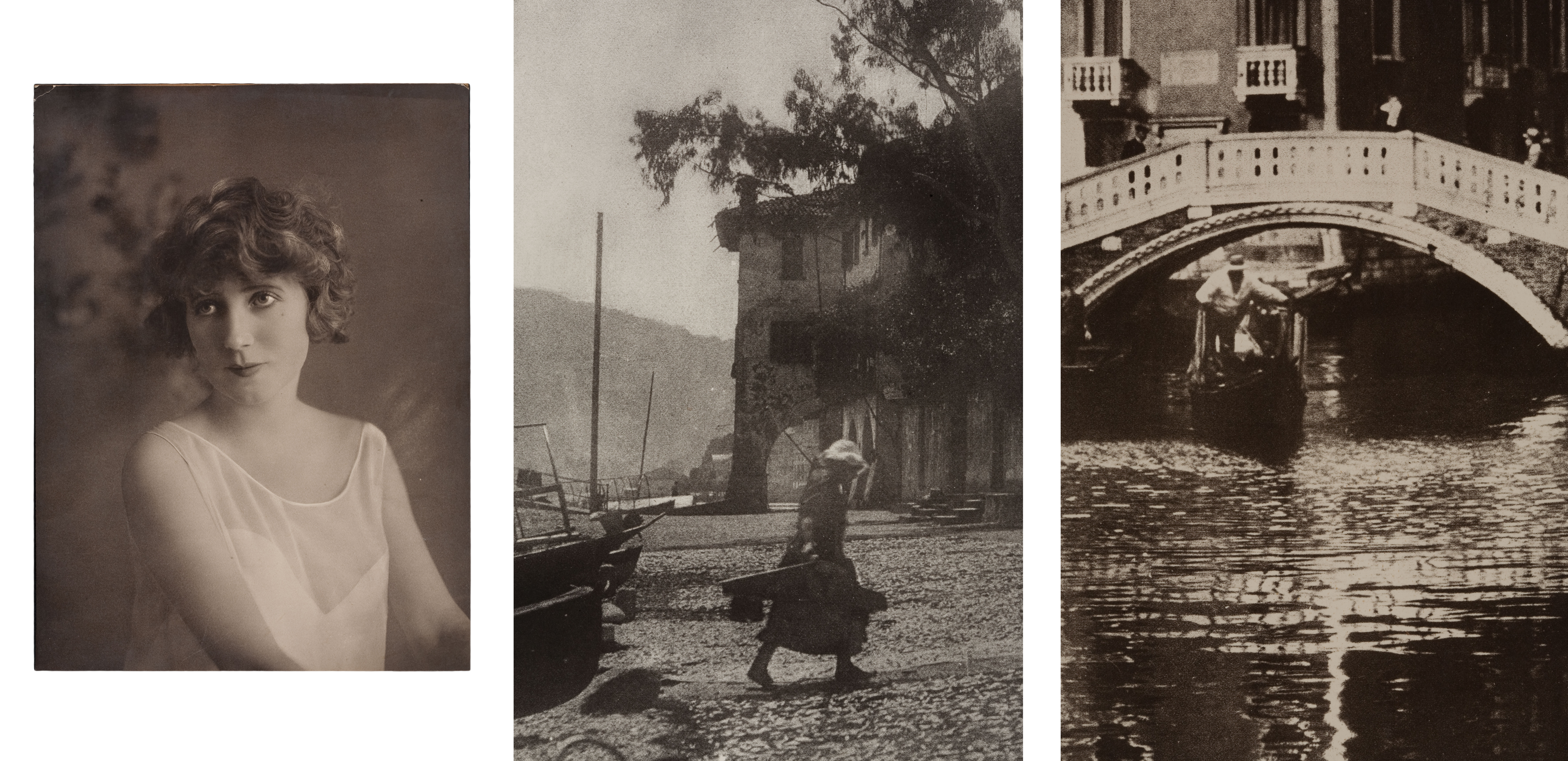
Images made this process have a course or grainy quality. While difficult to image, prints have a distinctive velvety quality in the shadows.
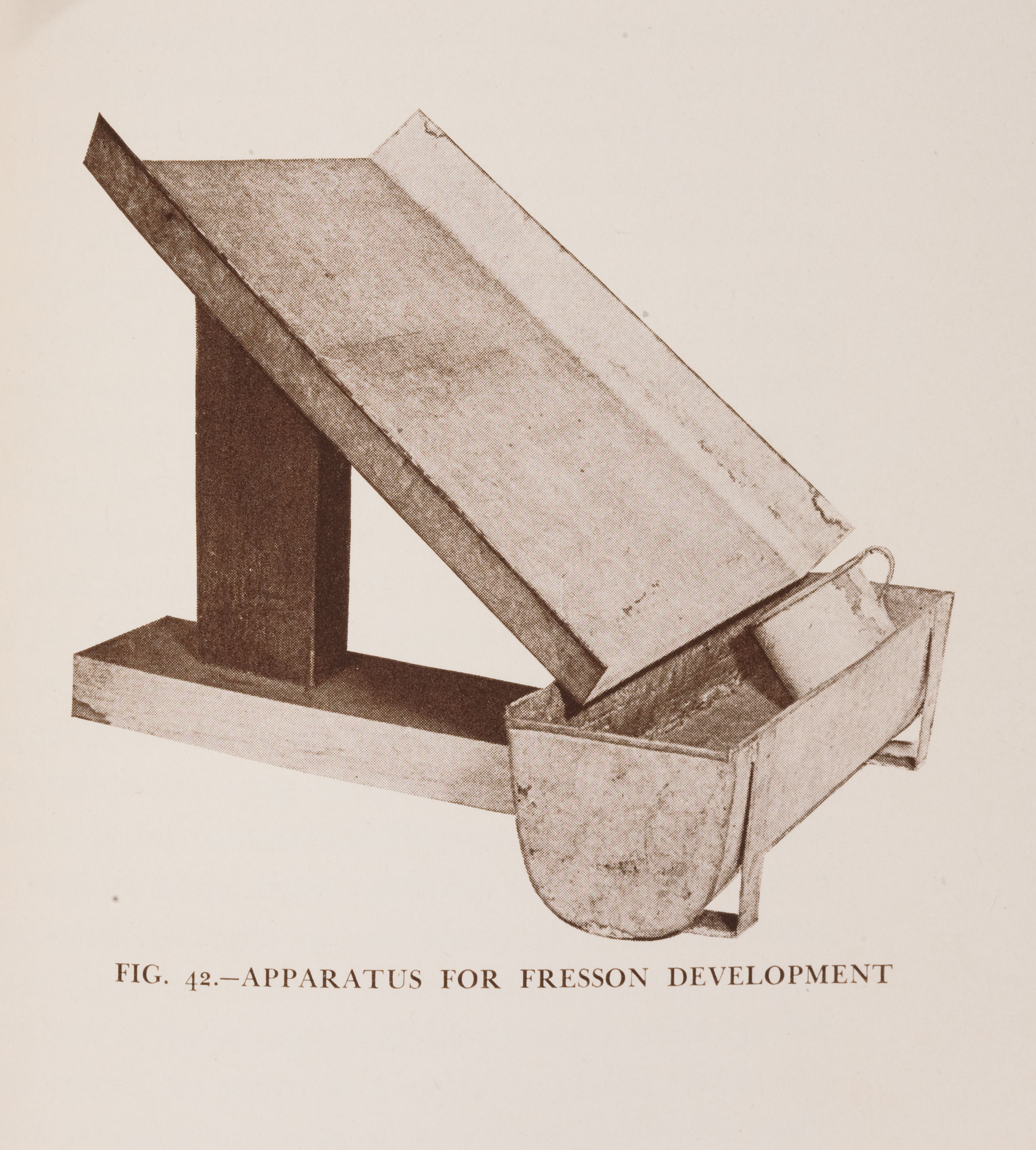
During processing the print was placed on a metal plate at an angle and a slurry of sawdust and water was repeatedly poured over the surface, which gradually eroded the soluble portions of the pigmented colloid.
Formats/Mounting
Direct carbon prints may be mounted to a secondary support for aesthetic considerations, but it is not necessary.
Direct carbon prints may be mounted to a secondary support for aesthetic considerations, but it is not necessary.
What to look for: Prints may or may not be mounted.
Finishing Techniques
Retouching of the negative and print are possible. Negative retouching could be done by addition to create density and definition to an area or by subtraction to lighten an area. Retouching in the print may include airbrushing or application of ink to the surface of the print.
Retouching of the negative and print are possible. Negative retouching could be done by addition to create density and definition to an area or by subtraction to lighten an area. Retouching in the print may include airbrushing or application of ink to the surface of the print.
What to look for: Retouching in the negative often gives a mottled appearance. Retouching the print may be visible as ink on the surface of the print.
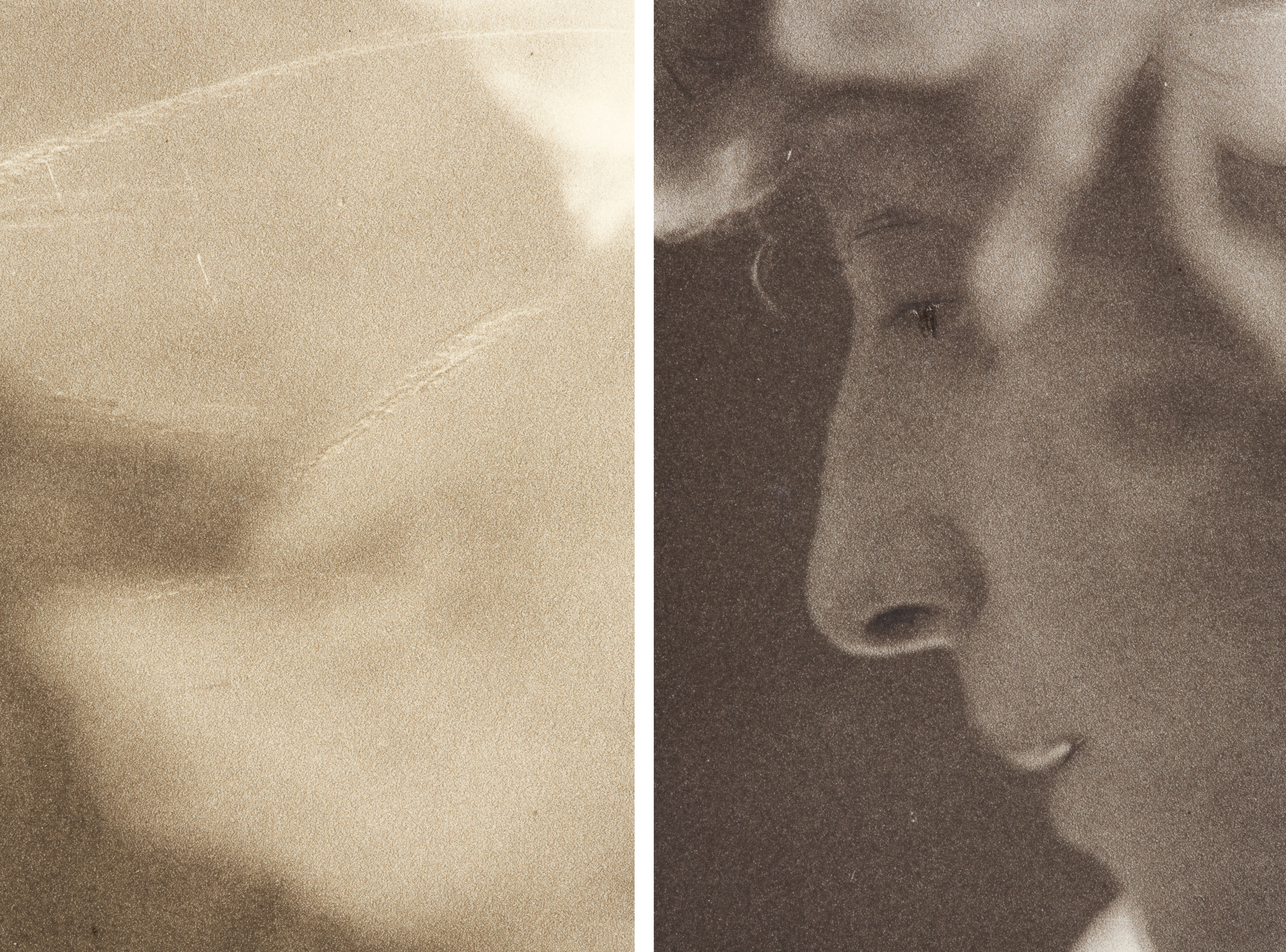
The negative of the print on the left was retouched. Pigment has been applied to give definition to the eye in the print on the right.
Information Written or Printed on Object
Direct carbon was typically used by fine art photographers and high end studios. The artist’s name, the subject, or the date may be written on the supports front or back (recto or verso).
Direct carbon was typically used by fine art photographers and high end studios. The artist’s name, the subject, or the date may be written on the supports front or back (recto or verso).
What to look for: Name of the artist, date, subject on the front or back.
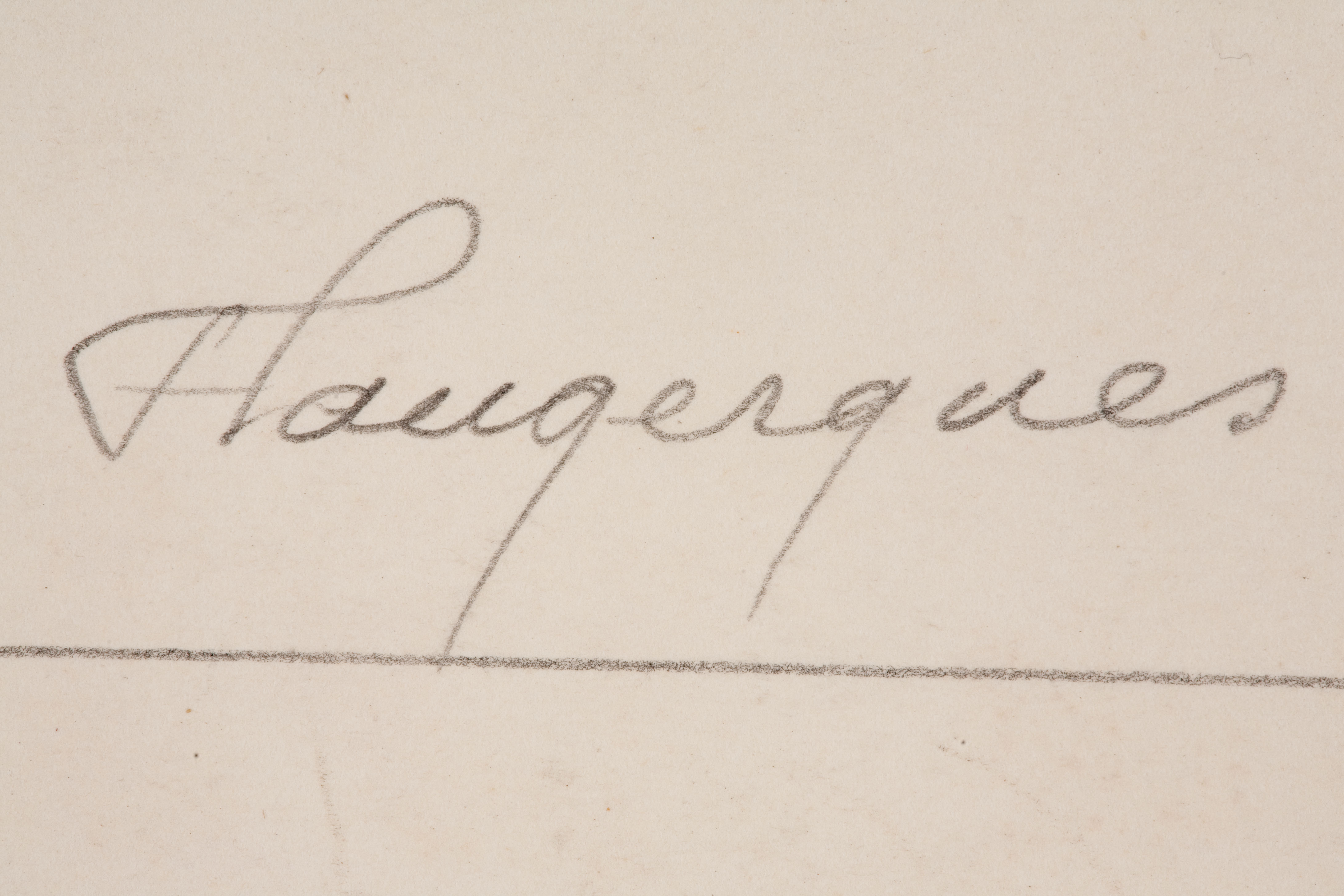
This print has been signed by the photographer.